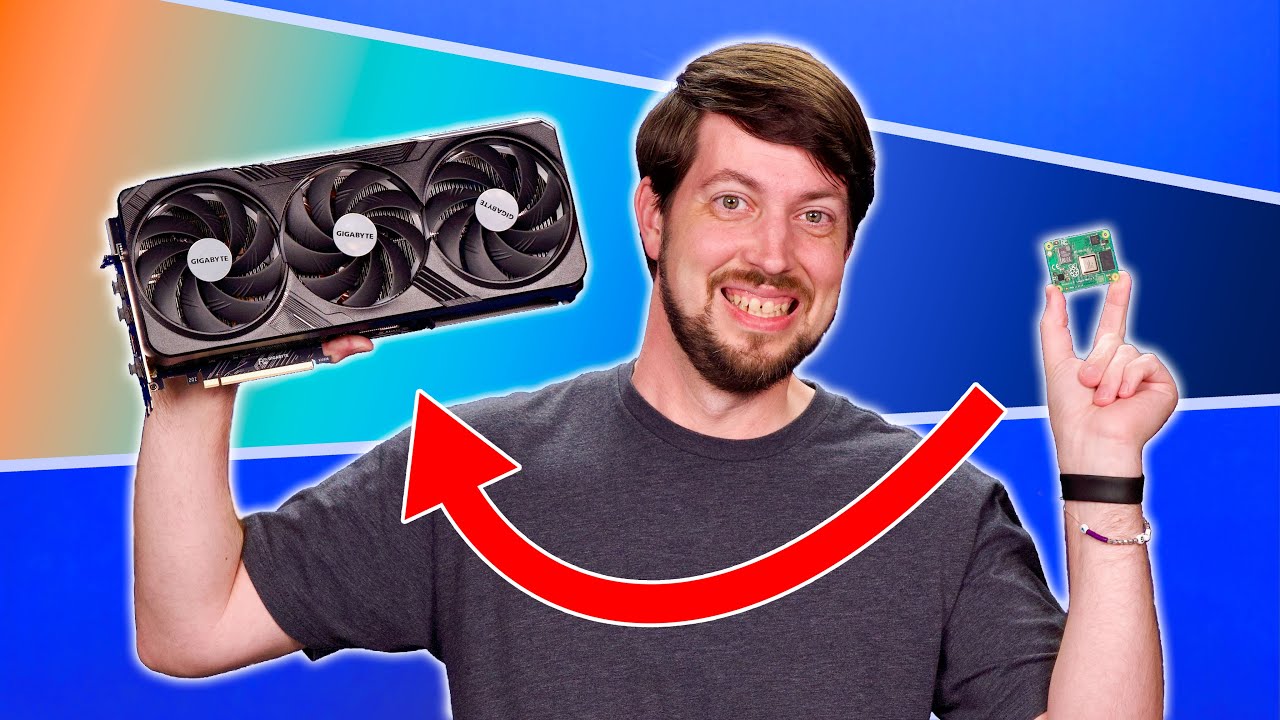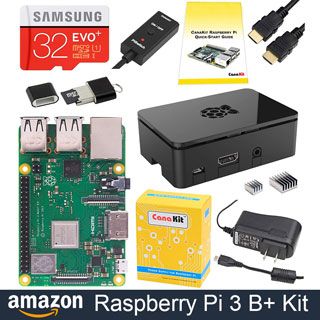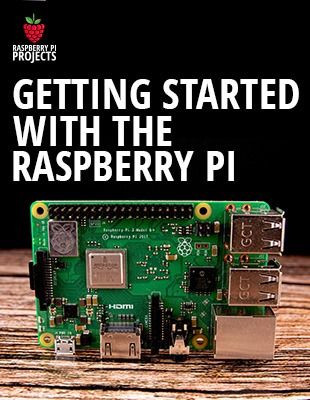Exploring the possibilities in tech sometimes leads us to unforeseen innovations and seemingly pointless but fascinating adventures. This journey is one of perseverance, resilience, and the relentless pursuit to mount a graphics card to a Raspberry Pi.
The Obscenely Large Graphics Card – The 4090 “Widowmaker”
In today’s fast-paced technological advancements, the 4090 Graphics Card stands out as the pinnacle of consumer graphics cards, so much so that jokes circulate about plugging our computers into our graphics card. It is so massive and powerful; I’ve affectionately dubbed it “The Widowmaker,” primarily because its cost might just be the death of me. Weighing over four pounds, this behemoth requires a power supply that puts out 12,100 Watts.
The Mission
My mission, albeit seemingly nonsensical, was to get a graphics card working on a Raspberry Pi. After a series of trial and errors and numerous configurations, the epiphany was not to mount a graphics card to a Raspberry Pi but to mount a Raspberry Pi to a graphics card! Aided significantly by Irec in Poland and utilizing Compute Module 4, we designed a PCI Express card named Pi 4 GPU, or Pig, which typically plugs into a computer’s motherboard but was engineered to plug into a graphics card instead.
Sponsorship and Contributions
This revolutionary creation was sponsored by JLC PCB, renowned for their plethora of services including PCB assembly, 3D printing, and more. They facilitated the build of the PCI Express card with their services, allowing for a smooth creation process and offering a reliable platform for makers worldwide.
Testing Graphics Cards: A Roller Coaster of Failures and Successes
The Raspberry Pi has its limitations and is never designed for such graphics-extensive use. I tested several graphics cards including NVIDIA’s and AMD’s flagship cards and found that neither supports the Raspberry Pi. I even took it a step further, testing Intel’s Arc a750, however, its Linux drivers are incompatible with the processor that Pi uses.
Small Victories
After relentless testing and countless failures, a small victory emerged as I managed to get a Radeon HD 7470 working. It was a glimpse of hope in this seemingly insurmountable task, however, it wasn’t able to play 3D games, and it made for a complicated install, limiting its functionality to console and some glitchy Graphics.
The Reasons Behind the “Stupid” Mission
This relentless pursuit may seem pointless to many; however, there is a deeper reason beyond the “it can’t be done, so I am going to try it anyway” mentality. There are practical applications to justify this quest.
- Extra Display Output: It can provide an extra display output from a Raspberry Pi, a feature that might be beneficial for a select few tech enthusiasts.
- Media Servers: Many people use single board computers, like the Raspberry Pi, as media servers due to their efficiency. Mounting certain graphics cards could enable the real-time transcoding of media files, allowing users to store 4K videos on hard drives and play them back at lower resolutions to save bandwidth.
Paving the Way
This seemingly insane venture may pave the way for future hardware to work seamlessly with evolving technologies. Every driver hacked, every modification made, contributes to the creation of more harmonious tech ecosystems, enabling diverse hardware to work cohesively.
Conclusion
This journey of combining high-end graphics cards with a Raspberry Pi might appear to be a frivolous endeavor on the surface. However, this exploration deepens our understanding of hardware compatibility and unveils the potential of seemingly incompatible tech configurations. This endeavor is a testament to innovation, challenging norms, and pushing boundaries in the tech world.
Acknowledgements: A huge shoutout to Irec, JLC PCB, and Mirkotronics for their valuable contributions, and Lambda for providing the Quadro RTX 8000 for testing.
1-8 Layer PCBs for only $2, free assembly for 1-20 Layer PCBs, and new users can get $54 coupons!
LINKS
– The open source Pi4GPU project: https://github.com/geerlingguy/pi4gpu
– See ALL the gory details for every graphics card: https://pipci.jeffgeerling.com/#gpus-graphics-cards
– Video from Captains Workspace (4090 size joke): https://www.youtube.com/watch?v=0frNP0qzxQc
– Video from LTT (ASRock Rack M2_VGA): https://www.youtube.com/watch?v=DXo2m_XlH4s
– Video about getting GPUs working from last year: https://www.youtube.com/watch?v=crnEygp4C6g
– Video about the Petabyte Pi Project: https://www.youtube.com/watch?v=BBnomwpF_uY
– Thanks to Lambda Labs for sending the RTX 8000: https://lambdalabs.com
– Contact Mirek from Mirkotronics for PCB Design: pcb@mirkotronics.pl
#RaspberryPi #Sponsored



